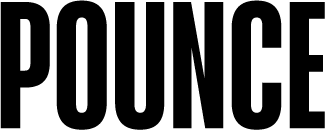Let’s get something straight:
Accessibility isn’t a developer’s job.
It’s not a box you tick during QA.
And it’s definitely not just about meeting a legal requirement.
It’s smart marketing. It’s a better brand experience. And most importantly, it’s the right thing to do.
A year ago, the team at Pounce made a decision.
We were going to stop treating accessibility as someone else’s problem. We were going to make it part of our process, our thinking, our creative. We were going to get curious about the people who weren’t being included and what we could do about it.
Because that’s the thing: most accessibility issues don’t come from a place of malice. They come from invisibility.
We forget to consider people who interact with content differently. People who can’t hear your latest ad. People who navigate your website using only a keyboard. People who rely on screen readers to access a piece of content you sweated over for weeks.
They’re not edge cases. They are your customers. They are your audience. And they deserve better.
Accessibility is everyone’s business
Let’s talk numbers for a minute.
- 50% of disabled people shop for physical products online every week. That’s double the average consumer rate.
- 87% experience frustrating accessibility issues while doing so.
- 36% say accessibility directly impacts their choice of website.
- And 6% report being completely unable to make a purchase because the site was unusable.
(Source: Fable, 2025 – The State of Online Shopping for People with Disabilities)
So if we know that accessibility drives purchasing decisions and impacts user experience, why isn’t it already baked into every campaign, every site, every piece of content?
The answer is simple. Marketers aren’t being trained to see it as their responsibility. But it is. In fact, it might be the biggest untapped growth lever sitting in plain sight.
What we’ve learned on our accessibility journey
Since publishing our first guide in 2024, we’ve had some big wins and even bigger lessons. We’ve worked with clients who are leading the charge in this space. We’ve sat in on user testing sessions with people who navigate the world completely differently to how most marketers assume. And we’ve revisited our own processes to see where we were falling short.
Here’s what stood out:
- Inclusive design helps everyone: Captions, alt text, descriptive headings, accessible PDFs. These don’t just help disabled users. They help mobile users, people in noisy environments, users with slow connections, and even search engines.
- Accessibility is not a fixed state: You don’t launch a website or a campaign and tick the accessibility box forever. People’s needs evolve. Tech evolves. Standards evolve. Your work should too.
- Good accessibility is good UX: If you can’t tab through your own website, your UX needs a rethink. If your CTA buttons aren’t descriptive or your forms don’t have proper labels, you’re creating friction for everyone.
- Small changes compound: Adding alt text. Fixing colour contrast. Captioning videos. None of these take long. But they send a clear message: we see you, we’ve considered you, and you’re welcome here.
It’s time to reframe accessibility
There’s a mindset shift that needs to happen. Accessibility isn’t about adding something extra. It’s about removing barriers.
It’s not a feature. It’s a foundation.
And most importantly, it’s not just about disability. It’s about difference. Different ways of seeing, hearing, processing, moving, navigating. We all benefit when we design with that in mind.
Ever watched a video on mute because you were on the train? That’s an accessibility moment.
Ever zoomed in on a mobile site because the text was too small? That’s an accessibility moment.
Ever struggled to understand a cluttered infographic or PDF? You guessed it: Accessibility.
The reality is, we all experience situational, temporary or permanent challenges that make us grateful for accessible design. Which means accessibility isn’t a niche consideration. It’s a universal opportunity.
What can marketers do today?
If you’re reading this wondering where to start, here’s what I recommend:
1. Audit your website
Use tools like Google Lighthouse, WAVE or Stark to run accessibility checks on your key pages. You’ll be surprised what comes up.
2. Review your content creation process
Ask who is writing the alt text. Who is responsible for captions and transcripts. Who’s checking contrast, readability, link labels, or how forms behave with assistive tech?
3. Build accessibility into briefs, not just sign-off
Make it part of the conversation from the start. The earlier it’s considered, the easier it is to implement.
4. Educate your team
Host a lunch-and-learn. Bring in a speaker. Share resources. Accessibility isn’t just the job of designers or developers. Writers, strategists, marketers, even clients need to understand their role.
5. Get curious
Test your own experience. Try using a screen reader on your site. Try navigating without a mouse. Try watching your next brand video on mute with no captions. Ask questions. Listen to feedback. Make it better.
Marketing that includes more people performs better
At Pounce, we’re relentlessly curious. That means we don’t settle for surface-level solutions. We question. We challenge. We explore new ways to make marketing more inclusive, more human and more effective.
Because great marketing doesn’t just look good. It connects. It considers. It includes. And it delivers results that matter.
Accessibility has expanded our thinking and deepened our creative process. It’s reminded us that real impact happens when we design for difference, not just for the majority. It’s made us better marketers. And it’s made us better humans too.
This year’s updated Accessibility Guide is a reflection of what we’ve learned so far and what we’re still learning every day. It’s practical. It’s actionable. And it’s built to help you turn intent into meaningful change.
So if you’re ready to rethink how your brand shows up not just to a few, but to everyone this guide is for you.
Let’s build marketing that reaches further and resonates deeper.
Let’s make inclusion part of every brief.
Let’s stay relentlessly curious because better always begins with a question.
Because when you lead with curiosity, everyone is invited in.




